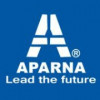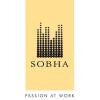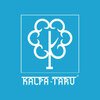
i
Aparna Constructions and
Estates
Filter interviews by
Aparna Constructions and Estates Civil Site Supervisor Interview Questions and Answers
Aparna Constructions and Estates Civil Site Supervisor Interview Experiences
1 interview found
Interview Questionnaire
1 Question
- Q1. How is your yearly Increment
- Ans.
My yearly increment is based on my performance and the company's financial performance.
My yearly increment is determined by a performance review process.
The company evaluates my performance based on my achievements, skills, and contributions.
The increment amount is also influenced by the company's financial performance and budget.
I have consistently received positive feedback and higher increments due to my exceptional...
Top trending discussions






Interview questions from similar companies

I applied via Company Website and was interviewed before Oct 2020. There were 4 interview rounds.
Interview Questionnaire
1 Question
- Q1. Draw SFD & BMD for a simply supported load.
- Ans.
SFD & BMD for a simply supported load
SFD is a diagram that shows the variation of shear force along the length of a beam
BMD is a diagram that shows the variation of bending moment along the length of a beam
For a simply supported load, the SFD will be a straight line with a constant slope
The BMD will be a parabolic curve with the maximum value at the center of the beam
The SFD and BMD can be calculated using equations an...
Interview Preparation Tips

I applied via Approached by Company and was interviewed before Mar 2021. There was 1 interview round.
(2 Questions)
- Q1. Start to bottom rcc work up to finishing work
- Q2. Finishing sequence(block work- concild zari -waterproof work-concild piping, electrical work- internal gypsum., dado work, painting work
Interview Preparation Tips

Interview Questionnaire
3 Questions
- Q1. Finishing related
- Q2. Gypsum plaster related
- Q3. Tile fixing related

I appeared for an interview in Feb 2022.
(1 Question)
- Q1. What are your strengths and weaknesses?
Interview Preparation Tips

I applied via Campus Placement and was interviewed in Mar 2022. There were 3 interview rounds.
(1 Question)
- Q1. Concrete Proportion, density
Pre and post pendamic
(1 Question)
- Q1. Ready to locate ?
Interview Preparation Tips

I applied via Recruitment Consulltant
(1 Question)
- Q1. What is SI unit of inductance
- Ans.
The SI unit of inductance is Henry (H).
Inductance is the property of an electrical circuit that opposes a change in current.
It is measured in Henry (H) and is named after American scientist Joseph Henry.
Inductance is used in various electrical components such as transformers, inductors, and motors.
The symbol for inductance is L and it is measured in units of Henry per meter squared (H/m^2).
Highmast and street lights , Towers , Control panel trouble shoot
Interview Preparation Tips
- Electrical Maintenance
- Building Construction
- Electrical Machines
- Switch gears
- Business development
- Safety Management System
- Operating Systems

I appeared for an interview in Mar 2025, where I was asked the following questions.
- Q1. Civil power project
- Q2. Road work farnace CCM
- Q3. Industrial all project
Interview Preparation Tips

I appeared for an interview in Mar 2025, where I was asked the following questions.
- Q1. BUILDING CONSTRUCTIONS ALL WORK
- Q2. HIGH RISE BUILDING CONSTRUCTIONS
- Q3. RESIDENTIAL BUILDING STRUCTURE ANALYSIS
- Q4. PILLING FOUNDATION TO BUILDING STRUCTURE WORK AND HOSPITAL
- Q5. RESIDENTIAL BUILDING ALL STRUCTURE WORK EXPERIENCE R.RAJKUMA COMPNNY LTD
Interview Preparation Tips

I applied via Referral and was interviewed in Oct 2023. There was 1 interview round.
Project planning management estimate and costing
Tell us how to improve this page.
Aparna Constructions and Estates Interviews By Designations
- Aparna Constructions and Estates Junior Engineer Civil Interview Questions
- Aparna Constructions and Estates Senior Civil Engineer Interview Questions
- Aparna Constructions and Estates Graduate Engineer Trainee (Get) Interview Questions
- Aparna Constructions and Estates Site Engineer Interview Questions
- Aparna Constructions and Estates Assistant Engineer Interview Questions
- Aparna Constructions and Estates CRM Executive Interview Questions
- Aparna Constructions and Estates Assistant Manager Interview Questions
- Aparna Constructions and Estates Construction Engineer Interview Questions
- Show more
Interview Questions for Popular Designations
- Civil Site Engineer Interview Questions
- Site Engineer Interview Questions
- Supervisor Interview Questions
- Civil Engineer Interview Questions
- Safety Supervisor Interview Questions
- Site Supervisor Interview Questions
- Senior Site Engineer Interview Questions
- Quantity Surveyor Interview Questions
- Show more
Interview Questions from Similar Companies

Aparna Constructions and Estates Civil Site Supervisor Reviews and Ratings
based on 4 reviews
Rating in categories
|
Assistant Engineer
201
salaries
| ₹2.5 L/yr - ₹6 L/yr |
|
Junior Engineer
105
salaries
| ₹2 L/yr - ₹5 L/yr |
|
Senior Engineer
96
salaries
| ₹4.2 L/yr - ₹9.2 L/yr |
|
Engineer
93
salaries
| ₹3.8 L/yr - ₹7 L/yr |
|
Assistant Engineer - Civil
83
salaries
| ₹2.8 L/yr - ₹5.3 L/yr |

Sobha

Lodha Group

Cushman & Wakefield

Godrej Properties
- Home >
- Interviews >
- Aparna Constructions and Estates Interview Questions










